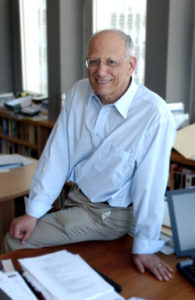Race discrimination on the rise – Scanlon Report
Racial and religious discrimination has spiked in Australia over the past year with Muslims, Africans and people from non-English speaking backgrounds the major targets, according to new research.
The Mapping Social Cohesion survey conducted by the Scanlon Foundation and Monash University found 20 per cent of people experienced discrimination because of their national, ethnic or religious backgrounds in the past 12 months.
The figure was up from 15 per cent in 2015 and has increased from just 9 per cent in 2007.
Report author Professor Andrew Markus said reporting of discrimination had reached a peak since the first Scanlon survey in 2007.
“Continuing the pattern of previous surveys, in 2016 those of a non-English speaking background reported the highest experience of discrimination at 27 per cent, compared to 17 per cent of those born in Australia and 19 per cent of those born overseas in English speaking countries,” Professor Markus said.

Prof Andrew Markus
He said a similar pattern emerged in regard to respondents’ religions.
“The aggregated data for the nine national surveys we’ve done since 2007 shows that reported experience of discrimination ranges from 8 per cent for Anglicans and 13 per cent for Roman Catholic to 26 per cent for Hindus and 31 per cent for Muslims,” Prof Markus said.
An analysis of birthplaces saw people from the UK as 8 per cent of those reporting discrimination while people from China and India were 25 per cent and 27 per cent respectively.
The findings of this year’s survey, which for the first time included more than 5,000 overseas-born respondents, reveal high levels of reported discrimination for a number of particular national groups.
“Discrimination for a number of European countries was around 11-15 per cent, reported discrimination was at 39 per cent among those born in India, 39 per cent for China, 55 per cent for South Korea, 67 per cent for Kenya, 75 per cent for Zimbabwe, and 77 per cent South Sudan,” prof Markus said.
The 2016 survey also included a follow-on question on the frequency and form of discrimination.
Of those who reported discrimination in 2016, the largest proportion, 53 per cent said that it happened infrequently while 17 per cent said it happened “about once a month” and 14 per cent said it occurred “often”.
The number of people experiencing reported discrimination at least once a month in 2016 had risen to 31 per cent – up from 29 per cent in 2015 and 2015, the survey found.
Respondents were asked to say what form of discrimination they were subjected to.
The most common answer was ‘being made to feel that they did not belong’, which 56 per cent experienced, followed by verbal abuse (55 per cent), not offered work or not treated fairly (17 per cent), had their property damaged (10 per cent); and, were physically attacked (8 per cent).
The survey also found evidence of slightly worsening relations in local areas with 81 per cent of respondents saying that that people were ‘willing to help neighbours’, down from 85 per cent in 2015, and the lowest proportion in the last six surveys.
Meanwhile 74 per cent agreed that in their local areas ‘people from different national or ethnic groups get on well together’, down from 78 per cent in 2015.
“When level of personal safety was considered, there was a higher level of concern; 64 per cent were not worried about becoming a victim of crime, down from 73 per cent in 2015, and 64 per cent indicated that they felt safe walking alone at night, down from 68 per cent,” Professor Markus said.
“The most notable change in 2016 is that 36 per cent of respondents indicated concern at becoming a victim of crime, up from 26 per cent in 2015, and the highest proportion recorded in the last six surveys,” he said.
Laurie Nowell
AMES Australia Senior Journalist













